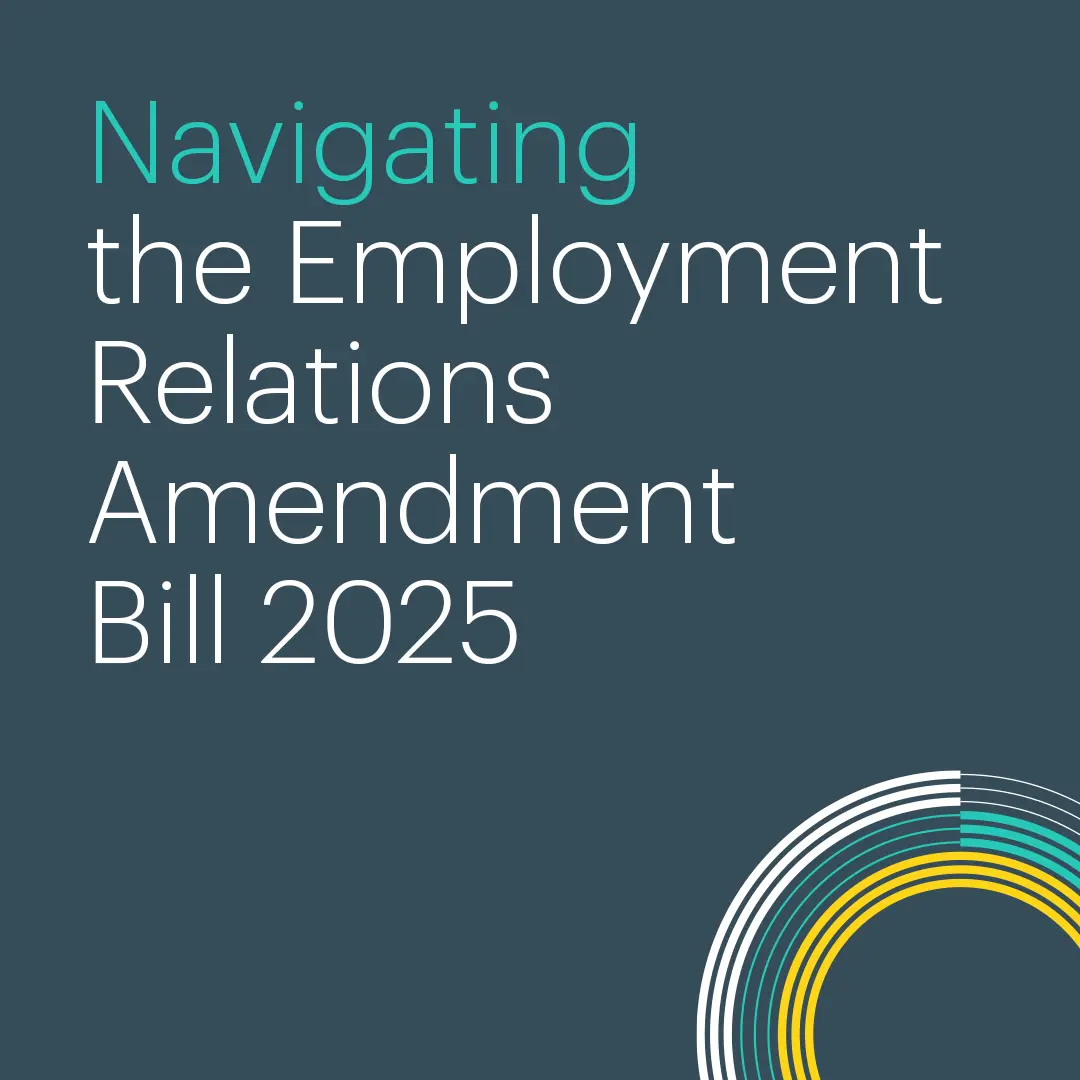Significant shifts are proposed for New Zealand’s workplace law landscape and the Employment Relations Act 2000. With the indication that the Employment Relations Amendment Bill will be passed into law before the end of the year, we summarise the changes and our view of the impacts for employers.
Contractors vs Employees – Greater Clarity
Under the new rules, genuinely independent contractors (“specified contractors”) will sit outside the Act’s employment-law umbrella. To qualify, a contractor must have:
- A written contract confirming independent-contractor status; and
- Ability to work for others (and sub-contract); and,
- No guaranteed hours, and the right to say “no” to extra work; and,
- A reasonable opportunity to seek legal advice before signing.
What this means for employers
- Review your independent contractor templates, make sure they tick every box.
- Document your due diligence when you vet subcontractors (especially in regulated industries).
- Reduce your risk of misclassification claims by getting these arrangements spot on.
Our view
Many of our clients who engage independent contractors may still not meet the requirements for this new classification of “specified contractors”, due to the restrictions placed on contractors during engagement. It will be vital to ensure that contracts are reviewed to meet the new specifications, with particular focus on making the agreements task orientated, with relaxing requirements regarding hours /days of work and sub-contracting arrangements.
Personal Grievances & Employee Behaviour – Shifting the Balance
The Bill aims to shift the personal-grievance system so that employees who contribute to their own dispute, particularly through behaviour that amounts to serious misconduct, can lose access to remedies like reinstatement or hurt-and-humiliation awards. New powers allow the Authority or Court to:
- Deny all remedies if an employee’s behaviour amounts to serious misconduct
- Remove eligibility to reinstatement and compensation for employees who contributed to the situation that led to the grievance
- Slash remedies or awards by up to 100% for contributory behaviour
- Ignore minor process errors that didn’t result in unfair treatment.
What this means for employers
- Investigations must still be thorough, but you can confidently flag contributory misconduct.
- Policy and training: employers should arm managers with clear definitions of “serious misconduct” and steps to document and address poor employee behaviours.
- Capture examples: document and/or capture evidence of poor employee behaviours to strengthen personal grievance defences.
Our view
These amendments will likely discourage “technical” personal grievances and encourage employers to take swift action and bypass due process when they consider and employee has engaged in serious misconduct. However, we believe there will still be the requirement for organisations to have solid investigation and disciplinary frameworks. Organisations without clear disciplinary policies may find it harder to rely on these new defences until their procedures are tightened.
High-Earner Dismissal Threshold – Certainty for Senior Roles
From day one, under new employment agreements, roles paying $180,000 pa base pay (indexed annually) would not be able to pursue unjustified-dismissal or disadvantage grievances tied to dismissal, unless the Employer and Employee agree to “contract back in”. There will be a transitional 12-month period for existing agreements.
What it means for employers
- Senior packages: review your executive employment agreements and decide whether to “opt back in” to full dismissal protections.
- Wage/Salary definitions: ensure your agreements clearly define “wages or salary” (excluding bonuses, allowances and other variable pay).
- Onboarding: flag the threshold in your new-hire paperwork so there’s no confusion down the line.
Our view
Setting a clear cut-off for high earners aligns New Zealand with some other jurisdictions. However, at $180,000 per annum of base pay, many mid-level employees may fall into this category, prompting negotiation over “contract-back” clauses, or negotiations over enhanced notice periods. We foresee more use of bespoke agreements for these “high-earners”, as both Employers and Employees hedge their bets.
Repeal of 30-Day Rule & the “MBIE Active Intent Form” Requirements
The “30-day rule” whereby new employees have to be employed on no-less-favourable terms and conditions than the terms of an existing collective agreement for the first 30-days will be removed.
The requirement to provide the “MBIE Active Intent Form” to new employees – ensuring the new employees contact information was captured and unless the employee opted out, then provide the employees contact information to the Union – is gone. Instead, employers will now need to:
- Inform new employees about any existing collective agreement(s) that cover their role;
- Provide them a copy of the collective agreement;
- Tell them how to contact the union.
What this means for employers
- Good-faith duty remains—but no automatic collective coverage or union-form red tape
- Penalties apply if you omit the new information requirements, so update your welcome packs.
Our view
By removing the 30-day period, the Bill provides more options for employers in terms of engaging employees on agreed terms and reduces administration. It’s also likely that many employers who have collective agreements in place covering the work of a new employee will not want to have substantial discrepancies in terms and conditions within their workforce as this will not help develop an engaged workforce.
Next Steps
Change brings both opportunity and compliance risk. Our team can provide support to:
- Audit and strengthen independent contractor contracts and employment agreements.
- Enhance investigation and disciplinary policies to capture contributory misconduct.
- Redesign employment agreements for those over or close to the $180k high income threshold mark, negotiate “contract-back” clauses, and manage the transitional window.
- Review onboarding processes and templates to understand how to engage new employees when a collective agreement is in existence.
- Train people leaders on the updated test of justification, e.g., the fair and reasonable employer test.
If you would like advice around any of these changes, please contact our team.





